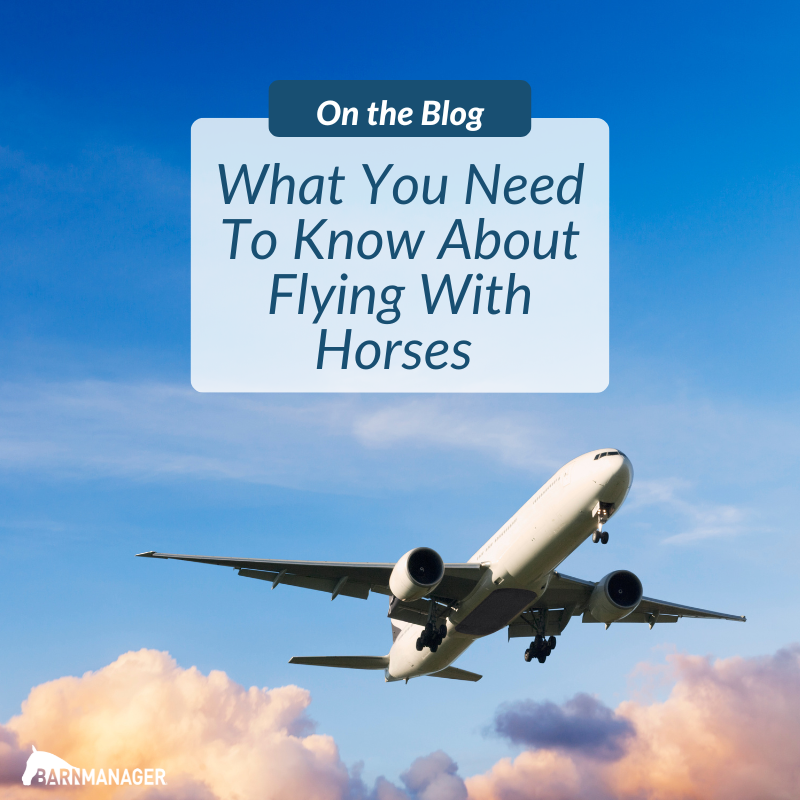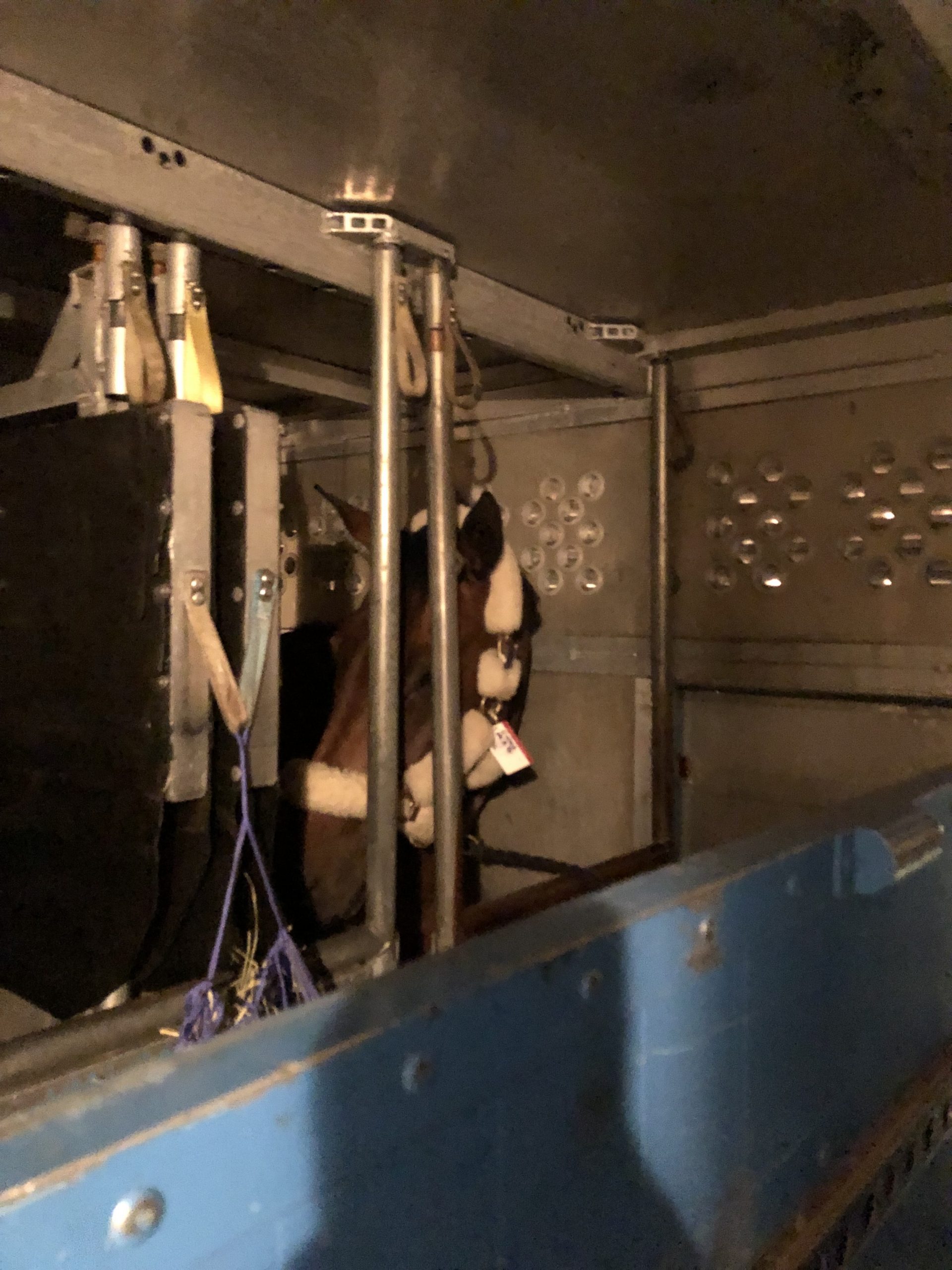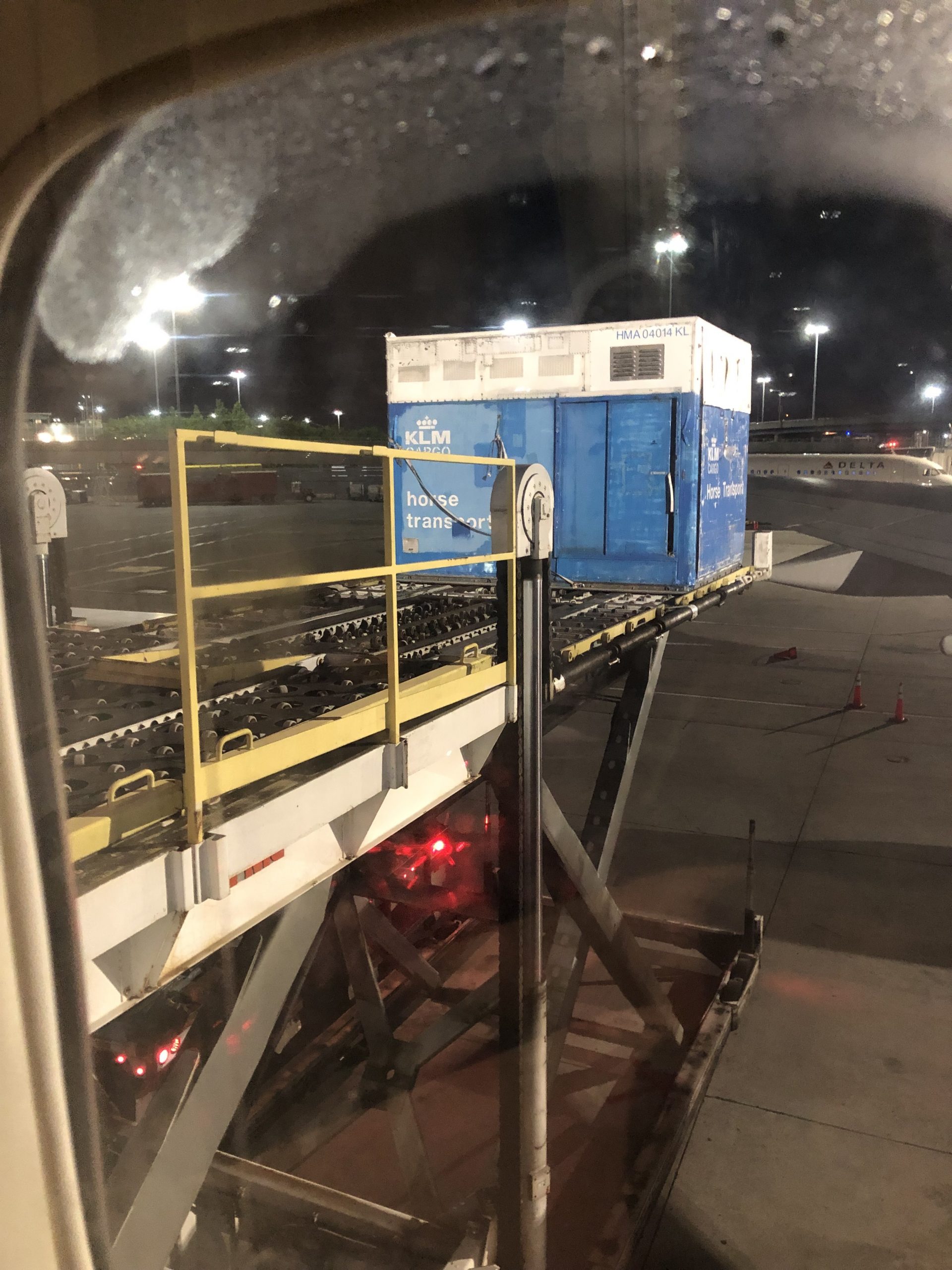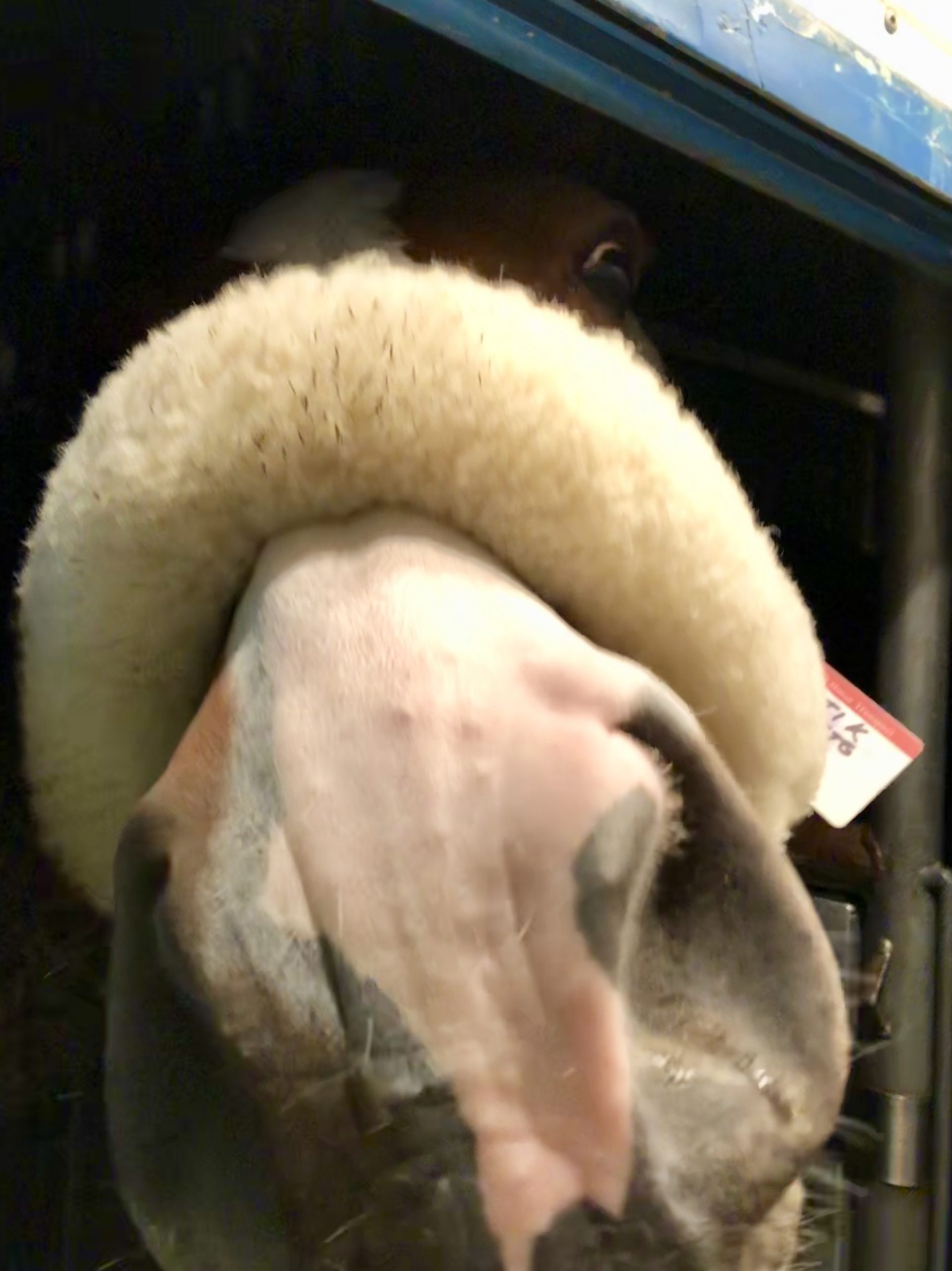
What You Need To Know About Flying with Horses
While the concept of flying with horses is pretty straightforward, the specifics of how the horses get from one place to the other smoothly are less obvious. Understanding more about the process can help you be relaxed and prepared when the day comes. It is always essential to check with your veterinarian regarding any preventative measures or in-flight health concerns. While these are general guidelines, you will need to check with the appropriate authorities and companies for exact details.
Types of Flights
If your horse needs to go a long distance such as across the country, or from the U.S. to Europe, flying can actually be less stressful. There are two kinds of flights with horses. One is a cargo flight where the plane does not have passengers beyond the horse-affiliated personnel. The other is a commercial flight with a passenger cabin at the front and a cargo-style section for the horses in the back.

A horse in the container, on the plane, and ready to go.
Arranging a Flight
There are several flight companies to help you arrange and prepare for your horse’s trip. Unlike organizing human flights, you cannot always pick exactly which day you want your horses to fly. If you give the flight company an idea of when you would like to depart, they can help find a flight around that date. The flight companies also complete the necessary paperwork for the horses to travel and will inform you of any health documents and other details they might need to confirm the reservation. As with human flights, delays and cancellations are always possible, so the flight companies will keep you updated on timing.
At the Airport
There are different importation and exportation laws depending on which country you are coming from or going to. Generally, horses need to arrive at the designated airport at least several hours ahead of their scheduled flight. For this reason, these airports have stalls for the horses to wait in when they get off the trailer.
The horses can stay at the airport for a couple of days if they are laying over from a horse show or other type of outing, so it is helpful to prepare plastic baggies with grain meals. You can help keep your horse hydrated by including electrolytes and adding water to their feed. It’s also a good idea to feed smaller meals ahead of air travel to help minimize the risk of any digestive issues. Like preparing your horse for a long drive, a stomach and ulcer support supplement can help keep your horse comfortable for the trip.
Once your equipment is checked in by airport staff and loaded, you will not have access to it until it is released either directly after the flight or after the horse exits a required quarantine. Each horse gets a flight bag in which you can put anything they might need during the flight.
Getting On the Plane

A container with horses getting loaded onto the plane.
Horses travel on the plane in large containers. Picture being able to pick up a box stall and move it with a giant forklift. The containers can be divided into straight stalls to fit either two or three horses, similar to a trailer. The container has a space for the horses with a low wall separating them from a compartment in the front where hay, buckets, and the flight bags are stored. Water and hay are hung for the horses too.
Staff at the airport will guide you to walk your horse into their spot in the container. Some horses find the container intimidating especially if they are new to flying, so having a treat handy can help. When everything is set, the containers are driven to the plane and loaded one by one such that the containers form a grid in the plane with small walkways between them.
If you are on a commercial flight, the flight staff will then help you get to the normal airport check-in and through security. You will usually be able to board ahead of other passengers to make your way to the back of the plane. Where you might ordinarily be looking for a bathroom, there is a small door to access the horse containers. Once you have passed through the door, you can walk around to find the container with your horse inside.
The Flight
Regardless of what type of flight it is, there will always be at least one flight staff member with the containers at all times. Since there can be more than twenty horses on a flight, it is still a good idea to check on your horse every couple of hours during the trip. Keeping them hydrated throughout is always important. You can encourage your horse to drink by holding carrots for them in their water buckets. The horse will have to go through the water to get the carrot, so it can help them drink a little extra.
Take-off and landing are generally the most stressful parts of the flight, so it’s good to make sure your horse doesn’t have any trouble. Though regulations can vary between flights and flight companies, you can ask the flight staff to request permission from the pilot to allow you to be with the containers during take-off and landing. There are no seats in the containers, so you will need to try and secure yourself comfortably in the front part of the container amongst the hay and flight bags. Keep in mind, flights can always experience turbulence, so it is important to be cautious any time you are moving around the containers.

Prepared for takeoff!
Getting Off the Plane
On commercial flights, first you will have to deplane as usual and claim any checked baggage. Then you will be guided to the horse arrival area of the airport, where you can wait for the containers to be removed from the plane. Once the horses are unloaded from the containers, staff at the airport will check each horse in accordance with country regulations. Some countries require a quarantine while others do not. Be sure to confirm your arrival with any follow-up shippers, so you can get picked up on time and make it smoothly to your final destination.
In addition to simply transporting you and your horse from one place to another, the flight company staff is also responsible for ensuring the experience is safe and pleasant. Ask any questions you might have so you can feel confident every step of the way. You are now free to move about the cabin.
Have questions about utilizing BarnManager or want to give it a try for yourself? Request a live demo here!